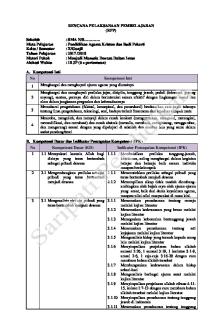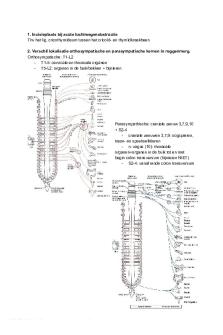Tetra pak case analysis PDF

| Title | Tetra pak case analysis |
|---|---|
| Author | Li Mengya |
| Course | 战略管理 Strategic Management |
| Institution | Peking University |
| Pages | 14 |
| File Size | 279.7 KB |
| File Type | |
| Total Downloads | 51 |
| Total Views | 159 |
Summary
Tetra pak case analysis...
Description
Tetra Pak Case Analysis
Contents 1. Introduction................................................................................................................ 2 2. Company Background................................................................................................2 3. Key Challenge............................................................................................................ 3 4. Analysis...................................................................................................................... 3 4.1 The Significance of Developing the Recycling Industry.................................. 3 4.2 External Environment Analysis.........................................................................4 4.3 Industry Analysis...............................................................................................7 4.4 Internal Environment Analysis..........................................................................8 4.5 A Brief Summary——SWOT........................................................................... 9 5. Options and Recommendation................................................................................... 9 5.1 Options.............................................................................................................. 9 5.2 Recommendation and Feasibility Analysis..................................................... 11
1
1. Introduction
This case mainly describes the problem that Tetra Pak is faced with insufficient recycling volume after entering China. After the market survey, Tetra Pak China leveraged its expertise and strong influence in the industry to successfully cultivate an aseptic paper packaging recycling industry chain, and explored the best development model for the waste recycling industry: opening up an industrial chain which starts from resources and goes back to recycled resources. With the joint efforts of Tetra Pak and relevant government agencies and partners, the recycling rate has been increasing year after year. The case finally raised three questions, which will also be the important content of this article’s analysis.
2. Company Background
Founded in Sweden, Tetra Pak was the world’s leading food packaging and processing company. Besides the familiar Tetra Pak package units used by consumers, the company also provided processing and distribution equipment, filling machines, and products to business customers in the food industry, particularly the dairy, cheese, ice cream, beverage, and prepared-food sectors. With the vision “We commit to making food safe and available everywhere” and the mission “We serve and work hand in hand with our customers and provide the best solutions for food processing and packaging”, Tetra Pak realized the importance of conducting business in a sustainable manner and taking full social and environmental responsibilities. The four 2
cornerstones of Tetra Pak’s circular economy strategy are growth, innovation, environment, and performance. In 1979, Tetra Pak entered China, bringing in ultra-heat treatment (UHT) technology and aseptic packaging. With the growth of China’s dairy industry, UHT milk accounted for around 80% of the consumer milk market, meanwhile, Tetra Pak expanded rapidly and took over the prominent position in the packaging market. However, although the cartons produced by Tetra Pak were 100% recyclable as well as having many environmental performance advantages, it is difficult for developing countries to recycle due to their unique structure. Therefore, under the guidance of circular economy strategy, Tetra Pak determined to create a UBC recycling value chain in China.
3. Key Challenge
After analyzing the case, it can be concluded that the key challenge for Tetra Pak is how to make the recycling industry (sustainable recycling value chain) bigger and stronger? One of the significant details is how to improve the recycling rate?
4. Analysis
4.1 The Significance of Developing the Recycling Industry
As mentioned in the case,Tetra Pak’s social responsibility is one of the reason that drives the company to do recycling practices. First of all, an enterprise actively taking social responsibilities can earn a good social reputation for the enterprise. 3
Enterprises with social responsibility can think for customers, providing high-quality services and products, and making consumers satisfied, so as to win customers’ trust and establish a good image among them. Secondly, doing this can enhance Tetra Pak’s product competitiveness and even competitive advantages in comparison to other packaging formats. Finally, risk management: although there are no legal requirements in China, from a global perspective if the company can implement it in advance, it can provide a practical case and policy reference to the government for a comprehensive waste management legislation.
4.2 External Environment Analysis
As one of the important tools, PESTEL model is usually used to analyze the general environment. In this article, I will use this tool to analyze the general environment in China. Firstly, in terms of the political environment, it is usually involved with government intervention, including tax, regulatory law, etc. Since our country listed the environmental protection industry as the top of the seven emerging strategic industries in 2016, various environmental protection policies have been frequently issued, such as the "Implementation Plan for the Classification System of Domestic Waste", "Guiding Opinions on Accelerating the Transformation and Development of China's Packaging Industry" and the "13th Five-year Development Plan of National Environmental Protection Standards", reflecting the support and emphasis of the Chinese government on environmental protection related industries.
4
Secondly, the analysis of the economic environment. China is currently at a critical stage of structural adjustment, transformation and upgrading, and there is a certain downward pressure on economic operation. Although compared with the double-digit high growth in previous years, the growth rate of some indicators has fallen somewhat, the economic operation has maintained an overall stable trend. As shown in Figure 1 below, China's per capita disposable income and consumption expenditure have maintained an upward trend in recent years, which shows that people have a higher pursuit of living standards. In addition, in consumption expenditure, the category of food, tobacco and alcohol account for the majority with a value of 28.2%, which indicates that the food industry is developing well, and the waste produced will increase year by year, bringing opportunities as well as pressure for the development of the recycling industry. Figure 1 2017-2019 National Per Capita Disposable Income and Consumption Expenditure
5
Figure 2
2019 Per Capita Consumption Expenditure and Composition of National Residents
Thirdly, as for social environment, in recent years, people are paying more and more attention to their health, and milk will become a necessity. In addition, people's awareness of environmental protection has been increasing. For example, they prefer paper products to plastic ones and pay attention to waste classification, which is a positive signal for the development of China's recycling value chain. Fourthly, technology environment. At present, China's information and network are developing rapidly, and artificial intelligence and big data are gradually being used by more and more companies. This provides an excellent opportunity for the progress of the recycling value chain: the company can focus on developing and promoting packaging waste recycling technologies such as automatic identification, sorting, and deinking of UBCs. In addition, relying on this chain, the Internet, big data and cloud computing can be used to optimize the UBCs recycling value chain. Fifthly, environmental issues. Despite the great attention and many years of governance, there are still many problems in China's environmental situation, such as 6
PM2.5, landfill, water contamination. These phenomena will promote higher awareness among the government and people, and thus give impetus to the development of the recycling industry. Finally, legal environment. In the past few years, China has issued a number of laws related to environmental protection, because there are many similarities with the "political environment" analysis, so I won't go into details here. In general, the opportunities provided by the general environment for the development of recycling industry are greater than the threats.
4.3 Industry Analysis
There is not much analysis of the paper packaging waste recycling industry in the case, therefore, I would like to briefly introduce the industry with the help of some content in the Porter Five Force Model. Analysis was performed with recyclers as the main body.First of all, the rivalry among existing firms in this industry is relatively strong, because the services they provide are highly repetitive and the prices are similar. Secondly, threat of new entrants. The barrier to entry is high, because some technical support is needed. Third, buyer power. Because secondary markets tend to give lower prices, buyers have stronger bargaining power. Finally, supplier power. Since a used package can only be sold for a few cents, it is difficult to cultivate the habit of storing milk packages for sale or exchange for other items. In addition, UBCs were low-value materials to many waster pickers, so they usually collect very little UBCs. Therefore, the supplier's bargaining power can be considered strong indirectly.
7
In summary, this industry is not very attractive to most companies, which is why it is currently mainly composed of SMEs. However, the country has now turned its attention to this industry, and it is likely to introduce related subsidies and welfare policies to encourage the development of the industry in the future.
4.4 Internal Environment Analysis
From the contents of the case, we can see that Tetra Pak has the following resources and advantages: 1. Advanced equipment 2. Good relationships with customers and other partners 3. Excellent corporate culture and environmental protection concept (4R principles: Renewing, Reducing, Recycling, Responsibility) 4. High brand awareness and market share 5. Technological resources 6. Human assets and intellectual capital (Tetra Pak has experts from all over the world) On the other hand, it also has certain weakness. For example, because of the special structure, its product is more difficult to recycle than alternatives. According to the above analysis, Tetra Pak's core competency is its technology and capability to integrate resources. On one hand, Tetra Pak can provide its partners with equipment and technology for recycling UBCs, and its technology makes it difficult to be imitated and surpassed in the industry, so advanced technology can be
8
regarded as Tetra Pak's core competency. On the other hand, Tetra Pak can use its own resources to find partners, train and educate scavengers and build a sustainable recycling value chain, which shows that it has a strong capability to integrate resources. Ps: Tetra Pak's competitors in the packaging industry are not mentioned in this article, so the core competency here can also be understood as the core advantage that can be used to develop the recycling value chain. 4.5 A Brief Summary—— —— ——SWOT
Strength: technology, good relationships with stakeholders, reputation, high market share, human assets,etc. Weakness: products that are not easy to recycle Opportunities: policy support, customers’ awareness, technology development Threats: no financial support from the government, the speed of UBCs produced may exceed the ability of the company to recycle, inconsistent with the goals of some partners (some recyclers feel huge pressure about the volume indicator) Tetra Pak can acquire the ways of developing the recycling chain through leveraging its strengths as well as opportunities.
5. Options and Recommendation
5.1 Options
Speaking of the sustainable recycling value chain established by Tetra Pak, we 9
can find that recycling capacity was the key to establishing the value chain, therefore recyclers are a key point in the value chain. As shown in Figure 3, other components in the chain are consumers, waste pickers, collectors, secondary market, etc. There are some challenges for this chain: 1. Starting is difficult. First, China had no waste separation system before—most UBCs were mixed with other household waste. Second, only a limited quantity of companies had capabilities of recycling the UBCs. 2. UBCs were low-value materials to these waster pickers,so they have no motivation to pick. 3. Integration. Development of recycling value chain requires collaboration among all parties. Over the years, Tetra Pak has gradually established the recycling value chain with the help of its resource advantages and achieved success to some extent. Figure 3
Tetra Pak’s Recycling Chain in China
Raw-material
Brand owners
suppliers (paper, aluminum,
Tetra Pak
(e.g., dairy
Distributors
Consumers
companies)
polyethylene)
Secondary
Recyclers
Collectors
market
Waste pickers
Note: Dotted lines represent the collection routes and solid lines represent the product routes
Regarding how to expand the development of the recycling industry and increase 10
the recycling rate in the future, I propose the following options: The first option is to change incentives for recyclers. Previously, rewards were given based on the recycling volume. If the indicators are not reached, Tetra Pak will reduce the support and sell the waste materials at high prices, which will bring a lot of pressure to recyclers. The second option is to optimize the recycling value chain as a whole. Tetra Pak mainly cooperated with small and medium-sized paper mills in the past few years, who played the role of recyclers. There are many collectors and waste pickers in the city. However, due to the lack of unified management, the role of these people has not been maximized. Therefore, if we want to continue to develop the recycling value chain and improve the recycling rate, we can expand the scale of recyclers and at the same time consider gathering these people together. In the future, in addition to cooperation with existing enterprises in the industry, Tetra Pak can directly leverage their resources and strengths, set up a recycling company, gathering collectors and scavengers under its own management, and establish a full coverage recycling system with the company as the core, facing consumers and penetrating into all corners of the city.
5.2 Recommendation and Feasibility Analysis
My final recommendation is to combine the two options. Specifically, in the short term, Tetra Pak will continue to help recyclers expand their recycling capacity by changing incentives and other methods. At the same time, set up special recycling
11
concentration stations, which are targeted to areas where Tetra Pak’s consumption is relatively concentrated: communities, schools. In the long run, with its integration capabilities, Tetra Pak can set up its own recycling company, which takes over the original business, continuing to look for partners, and recruiting its own employees, such as waste pickers. The company will pay them according to the recycling amount, which can arouse their enthusiasm, also enable them to have a basic life insurance certificate and generate a sense of social belonging. This measure is conducive to the long-term progress of the recycling chain. The so-called holistic improvement means that every step of the recycling chain must be improved. Therefore, in the future, we can also take advantage of technology to use AI and robotics in the collection and recycling process to make recycling intelligent. Through automatic identification, "grabbing" and separation of beverage paper packaging, improve recycling efficiency. Regarding the feasibility of this scheme, I think it is relatively high. From the perspective of its stakeholders, first of all, consumers will support the improvement of the recycling value chain. If we can add more value to UBCs, then consumers will have the incentive to collect and sell. Secondly, from the perspective of employees, since my plan will set up specialized companies and new sites in the long run, it will provide more employment opportunities. More waste pickers will have formal work and life guarantees. For existing employees, we will also give certain incentives, therefore employees will take a positive attitude. Finally, for existing partners, their recycling rate is not only related to technical equipment, but also how much UBCs 12
can be connected from downstream. If we stop using recycling volumes to demand them and use other ways to motivate them, their pressure will also be greatly reduced, which will help their growth. There is a risk of failure in the implementation of any scheme. Because my plan is to cooperate with more enterprises in the short term, providing more resources for partners, setting up companies and recycling sites in the long term, the cost will be a little high, therefore there is a risk of failure due to lack of funds without external help. Accordingly, even if Tetra Pak proves that it is possible to build up a recycling chain even without enforcement or supporting legislation in a developing country. In my opinion, the role of the government in our country is mighty. If the company can cooperate with the government and get support, it will be even more powerful for the improvement of the recycling value chain.
13...
Similar Free PDFs

Tetra pak case analysis
- 14 Pages

Tetra-Pak case study
- 14 Pages

STAT1600 Excel Analysis Tool Pak
- 32 Pages

Pak Study Pak MCQss-1
- 49 Pages

Coursework Case - case analysis
- 4 Pages

Case Analysis
- 4 Pages

Case Analysis
- 8 Pages

Pak Affairs - Hello jee
- 16 Pages

Norma Caja Tetra Brik-Nov-2017
- 4 Pages

CONTOH RPP PAK & BP
- 26 Pages

Anatomie - PAK 1
- 31 Pages

Current affair 2 pak
- 4 Pages
Popular Institutions
- Tinajero National High School - Annex
- Politeknik Caltex Riau
- Yokohama City University
- SGT University
- University of Al-Qadisiyah
- Divine Word College of Vigan
- Techniek College Rotterdam
- Universidade de Santiago
- Universiti Teknologi MARA Cawangan Johor Kampus Pasir Gudang
- Poltekkes Kemenkes Yogyakarta
- Baguio City National High School
- Colegio san marcos
- preparatoria uno
- Centro de Bachillerato Tecnológico Industrial y de Servicios No. 107
- Dalian Maritime University
- Quang Trung Secondary School
- Colegio Tecnológico en Informática
- Corporación Regional de Educación Superior
- Grupo CEDVA
- Dar Al Uloom University
- Centro de Estudios Preuniversitarios de la Universidad Nacional de Ingeniería
- 上智大学
- Aakash International School, Nuna Majara
- San Felipe Neri Catholic School
- Kang Chiao International School - New Taipei City
- Misamis Occidental National High School
- Institución Educativa Escuela Normal Juan Ladrilleros
- Kolehiyo ng Pantukan
- Batanes State College
- Instituto Continental
- Sekolah Menengah Kejuruan Kesehatan Kaltara (Tarakan)
- Colegio de La Inmaculada Concepcion - Cebu



